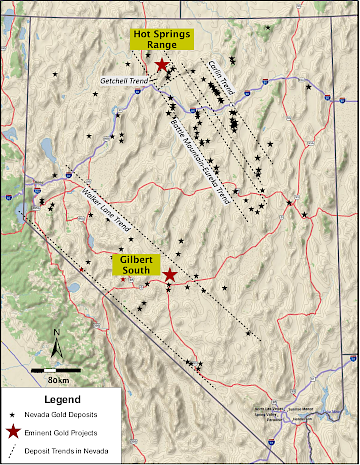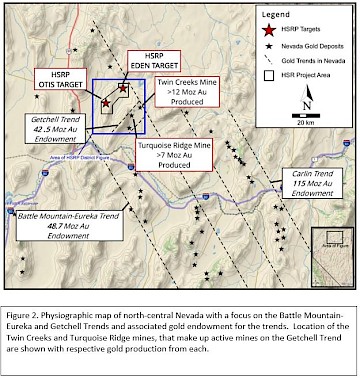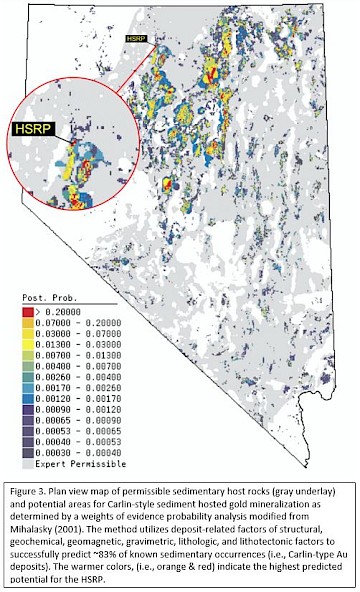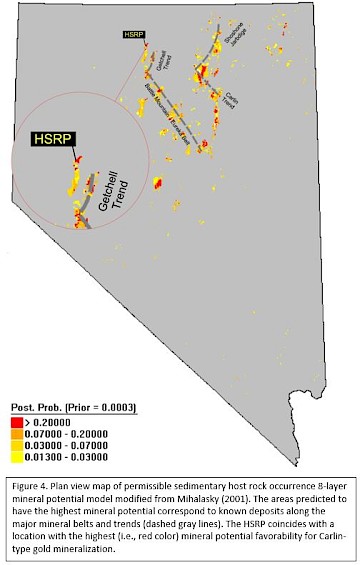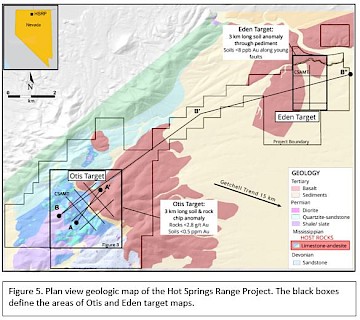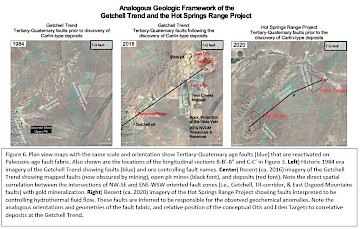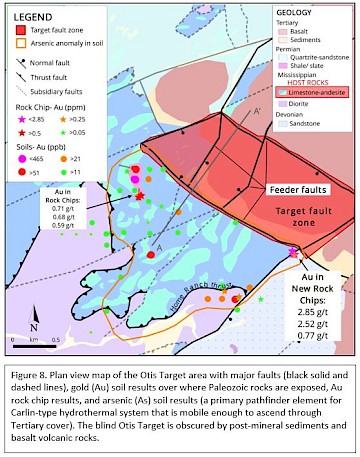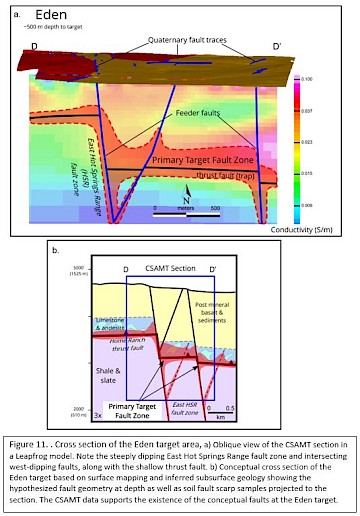Bailey, E., and Phoenix, D., 1944, Quicksilver deposits in Nevada: Nevada Bureau of Mines and Geology Bulletin 41.
Chevillon, V., Berentsen, E., Gingrich, M., Howald, B., and Zbinden, E., 2000, Geologic overview of the Getchell gold mine geology, exploration, and ore deposits, Humboldt County, Nevada: Society of Economic Geologists Guidebook Series, v. 32, no. 2, p. 195-201.
Dufresne, M., 2020, Technical Report for the Hot Springs Range Project, Humboldt County, Nevada, USA: Navy Resources.
Hays, R., 2019, Geologic Synergy related to the Formation of Nevada Gold Mines, GSN Elko & Winnemucca November Meeting, Geological Society of Nevada.
Johnson, R. D., and Muntean, J. L., Hydrothermal Features in Siliclastic-Volcanic Rocks above Carbonate-Hosted High-Grade Ore at the Turquoise Ridge Carlin-Type Gold Deposit, in Proceedings Society of Economic Geologists Annual Meeting, Keystone, CO, 2018.
Master, T. D., 2017, Technical Report on the Hot Springs Peak Gold Project, Humboldt County, Nevada, USA: Buena Vista Minerals Inc.
Mihalasky, M., 1999, Mineral Potential Modelling of Gold and Silver Mineralization in the Nevada Great Basin: Ph. D. dissertation, University of Ottawa.
Mihalasky, M. J., 2001, Mineral Potential Modelling of Gold and Silver Mineralization in the Nevada Great Basin.
Muntean, J. L., Cassinerio, M. D., Arehart, G. B., Cline, J. S., and Longo, A. A., Fluid pathways at the Turquoise Ridge Carlin-type gold deposit, Getchell district, Nevada, in Proceedings Smart Science for Exploration and Mining, Proceedings of the Tenth Biennial Meeting of the Society of Geology Applied to Mineral Deposits, Townsville, Australia2009, p. 251-252.
Roberts, R. J., Metallogenic provinces and mineral belts in Nevada, in Proceedings AIME Pacific Southwest Mineral Industry Conference1966.

